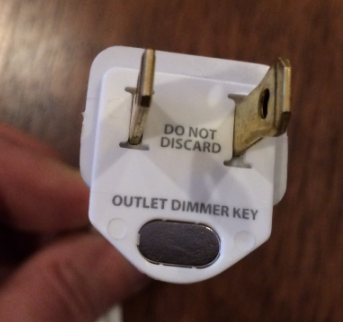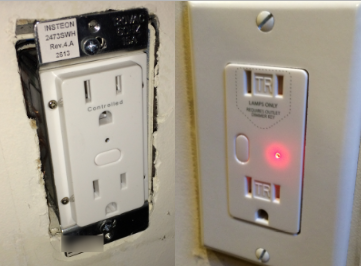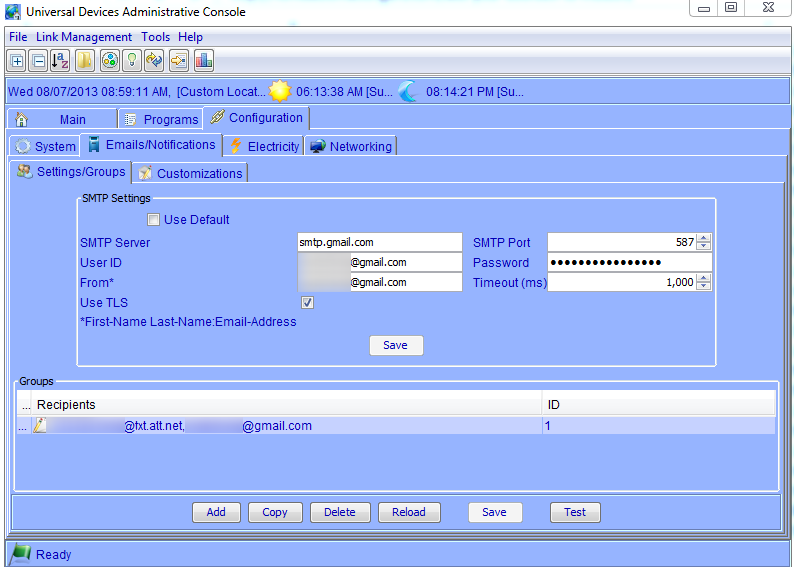We’ve talked about the Insteon OutletLinc before, including installing a new Insteon OutletLinc, using one to control stairway lighting, and using one for other indirect lighting. OutletLincs come in a variety of models with different features like SwitchLincs (dimming, dual-band, high capacity, color), but the dimming version cost me a bit of time recently.
As a general rule, you can ONLY use the Insteon Dimmer functionality for LIGHTS, which makes sense – why would you want to “dim” your phone charger, for example? I assume that would just charge the phone slower, but what would happen if you “dim” the power to the sensitive electronics in your home router, or to a device with high amperage requirements like a vacuum cleaner? Insteon added an additional safeguard to their dimming OutletLincs to prevent users from “accidentally” plugging these types of devices into these outlets – a “Dimmer Key” that fits between the plug and receptacle to “activate” the outlet:

The key seems to have a simple magnet in it to activate the outlet, and I’m guessing the reason they added this safeguard was because “Bad Things Can Happen” if you plug the wrong device into it.
At last count I have 7 OutletLincs installed in various new and existing locations, and somehow never considered the fact that the dimmer outlets are 2-prong, and the non-dimmer outlets are 3-prong:

That is, I never considered this until I installed a dimmer OutletLinc to control a basic floor lamp in my family room. I mean, it’s a lamp, which should be dimmable, right? The problem was that the lamp has a 3-prong outlet for some reason. So, I ended up wasting time installing a 2-prong dimmer outlet, only to have that “oh, crap!” moment when I went to plug in my 3-prong lamp.
The bottom line: you can ONLY DIM LAMPS with a dimmer OutletLinc. But more specifically, you can only dim lamps THAT HAVE 2-PRONG PLUGS with a dimming OutletLinc. Check the plug of your desired lamp before installing that outlet!


